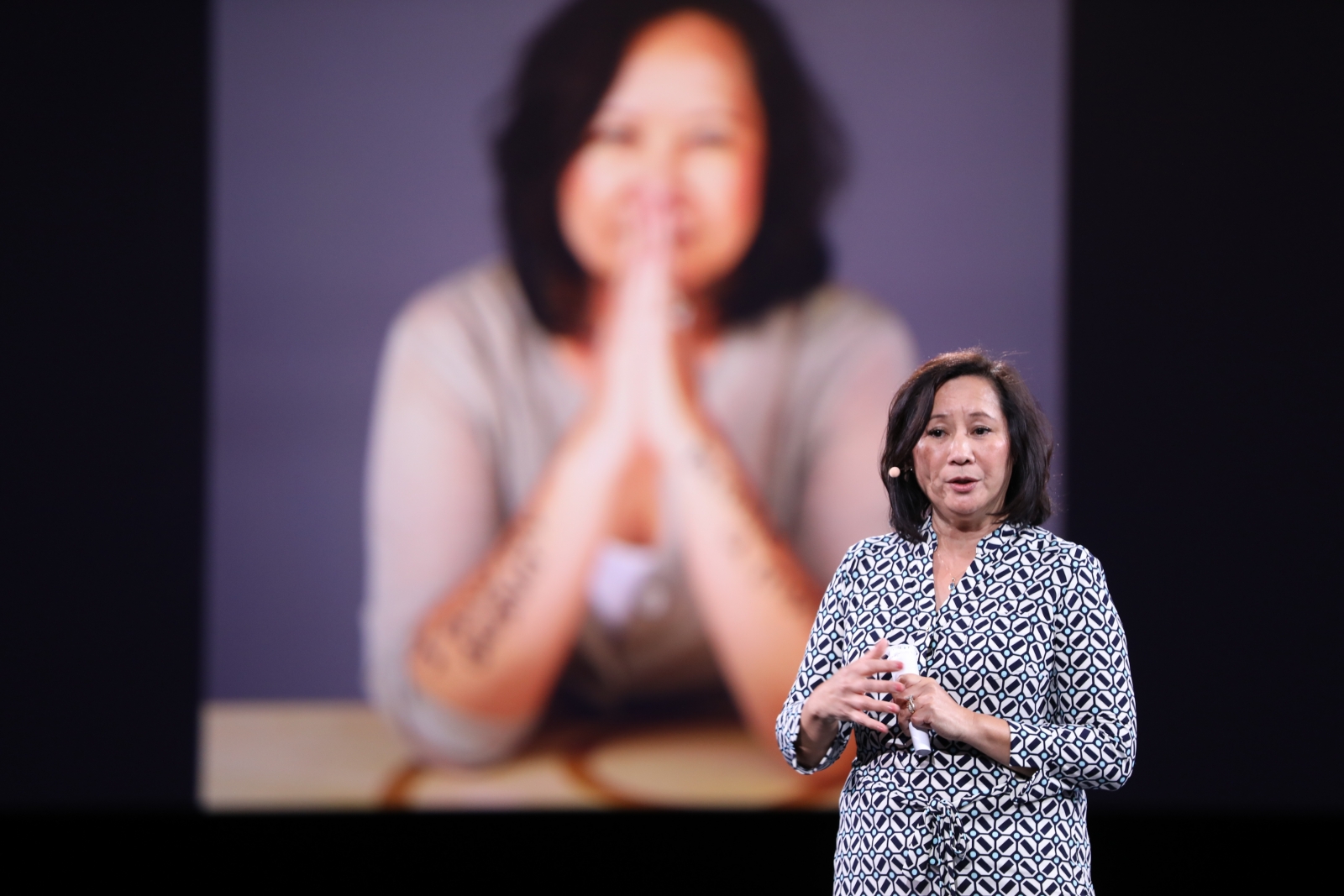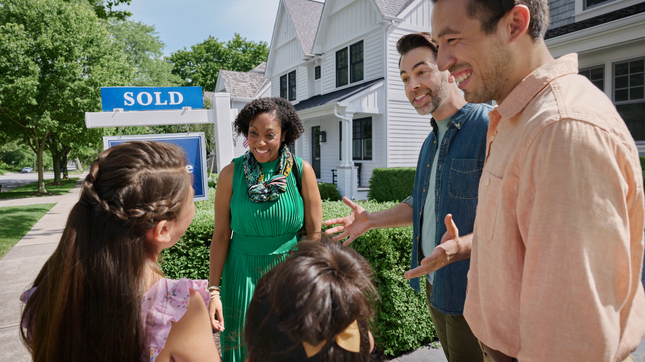What 16 Years in a Casino Taught One Agent About Customer Satisfaction

Sonia Krishnan
December 7, 2017
6 Minute Read
The cocktail waitress walked across Harrah’s Casino in Las Vegas, her stiletto heels soundless against the carpeted floor. In her left hand she balanced a tray with a dozen drinks; in her right, she clutched a six pack of beer to her 5-foot-6-inch frame.
For eight hours a day, from 1987 to 2003, Cindy Lawrence smiled and served drinks to customers, ignoring the ache in her calves and the smoke burning her eyes.
She had become numb to the noise and the drunk men who hit on her. Yet the casino had also become Cindy’s greatest teacher.
Understanding customer behavior
It was here where she learned the art of the hustle. She observed what made customers happy. She experimented with different approaches to net the highest tips and mastered how to earn repeat business.
By 2000, she was working the high limit room at Harrah’s, the VIP area where celebrities and star athletes gambled. She soaked up everything about “her people” – how old their kids were, what they loved to drink – and built relationships with them over the years.
She made nearly $100,000 a year, a salary that, as a single mother, gave her the chance to send her daughter to private school and buy property, two townhomes which she managed as rentals.
Cindy had come a long way from where she’d been at 20 – pregnant, unmarried, working odd jobs until becoming a career waitress.
But after 16 years at Harrah’s, she knew something needed to change.
Leaving Harrah’s for real estate
By 2003, the physical demands of the job had sunk into Cindy’s bones. Her lungs labored against the secondhand smoke; she hobbled from wearing high heels every day. Everything in her shouted, “leave.”
What would she find meaning in? How could she use her customer service skills to earn the same paycheck? What could she transition to quickly?
The answer seemed so obvious in hindsight. In 2004, Cindy quit the casino and got her license to buy and sell homes.
The second career reality
Real estate is an industry powered by agents shifting into second careers. According to 2017 data from the National Association of Realtors (NAR), the median age last year for licensed agents and brokers was 53 years old. Women make up more than 60 percent of this contingent.
Of the association’s 1.2 million members, only four percent report entering real estate as their first career. Thirty-three percent switch over to real estate after careers in management, business, finance, sales and retail.
Building a business in real estate
One the most attractive aspects of becoming an agent is the relative ease of obtaining a license and the potential to earn six figures a year. The hardest part is building a client base and learning how to run your own business. It can take months, sometimes years, to establish yourself.
Cindy’s first client in 2004 was a customer she knew from the casino. He and his wife were buying a house in Las Vegas and they needed an agent.
“There were 40 offers, but ours was all cash,” she said.
Her client got the house.
That year the market was hot. Cindy sold the two townhomes she owned near Las Vegas for $500,000; she and her ex-husband had paid a combined $200,000 for them in 1987.
She saw how a real estate investment could offer the average person financial gains they never thought possible. She wanted to show people these opportunities existed.
She began to acquire clients mostly through friends, past co-workers and word-of-mouth referrals. Then 2007 hit and the market tanked. Cindy found herself underwater and had to short sell her own house.
The secret to customer satisfaction
As the country descended into a financial crisis, Cindy seized on an opportunity: helping people short sell their homes.
“I knew what they were going through, but I never mentioned my situation,” she said. “I just put myself in their shoes and fought for them.”
Customer satisfaction, as she’d learned at Harrah’s, wasn’t giving people what they thought they wanted. It was being intuitive enough to give them what they didn’t know they wanted.
That’s why the girls in the casino who breezed across the room shouting “Cocktails! Cocktails!” never got the best tips, Cindy said.
Customer service required creativity. It meant connecting with people, asking if they wanted a drink, and if they said no, then offering different choices like water or coffee or tea. It was trying, then trying again.
The art of lead generation
Cindy’s empathetic approach to short-selling helped her grow her client base in a down market. She short-sold homes through 2011 and then enrolled in real estate coaching classes with Tom Ferry where she learned about acquiring clients through technology.
For a trial period in 2012, she placed ads with Zillow. Nothing happened the first four months, she said, but by the fifth month, she got a lead that covered her advertising costs for the entire year.
“I started to see this was a numbers game,” she said. “I asked myself, ‘How much am I willing to spend?’”
After studying the potential upside, she hired a new member of her team to run Zillow leads. It wasn’t an easy decision.
The biggest challenge running her real estate business, she said, was learning how to ask others for help.
“I saw my daughter become a mom”
Leaning on herself was how she navigated life. She recalled the 20-year-old girl she once was: single, pregnant, no insurance to pay for her medical bills and no family by her side as she went into labor on a cold Chicago evening Nov. 2, 1982.
She shared this story onstage at the 2017 Premier Agent Forum during the Dear World segment, a global photography project that asks people “If you had one story to share with the world, what would you say?”
Participants write a short message on their bodies with marker and sit for a portrait. Cindy knew exactly what she would write.
I saw my daughter become a mom, she scrawled across her arms. The portrait of 56-year-old Cindy projected behind her as she spoke at Forum.
“Thirty-five years ago, I gave birth to a beautiful daughter and I named her Cristina,” she said to the audience of 1,700 people.
Instead of giving her the baby, the doctors delivered harrowing news: Cristina had been born with her intestines outside her body. The condition was called gastroschisis and the baby was rushed to emergency surgery.
Cindy remembered looking at her daughter in the neonatal intensive care unit, tubes in her throat and IVs running the length her doll-size limbs, her body warmed by an overhead light.
Her voice trembled. “I vowed to her that day, that I, as her single mom, would give her the best that I could give her,” she told the crowd.
The past doesn’t dictate the future
That baby graduated with honors from college and is now a director of marketing. In May, Cristina gave birth to a baby boy who arrived seven weeks early.
Cindy drove to Santa Monica, CA, walked into her daughter’s hospital room and found herself staring at a baby with tubes in his body. She saw her daughter cradling the newborn against her chest, the past crashing against the present.
Everything Cindy had worked for suddenly crystallized. She knew, in that instant, her grandson would be OK.
She knew this because of the way her daughter held her baby, her heartbeat against his heartbeat, reminding him, I’m here, I’m here, I’m here.
Zillow works for agents
We're here to support you and your clients on their journey home. Discover how we can help grow your business today.
Learn more
